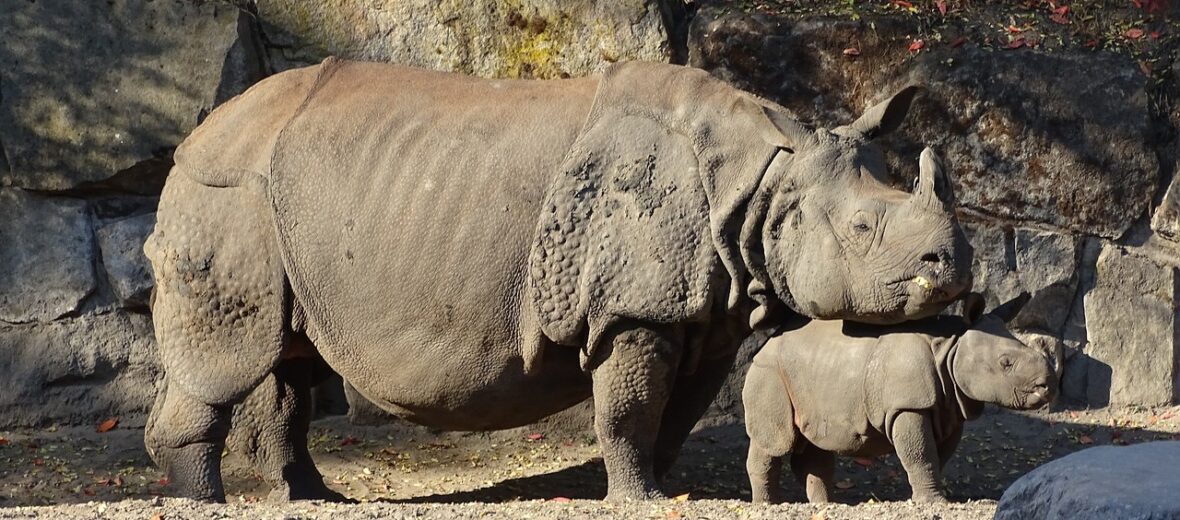
The Indian rhinoceros, aka the greater one-horned rhinoceros, resides in northern India and Nepal. It is the second largest rhino, after Africa’s white rhino. This Asian species of rhino has but 1 black horn, unlike the African rhinos who possess 2 horns. They prefer swamps, floodplain grasslands, and forests. Due to poaching, for their horn (which is used in traditional medicine) and habitat loss at the hands of agricultural development, their numbers plummeted to less than 200. This changed in the 20th century as conservation efforts began in an effort to bring this magnificent animal back from the brink of extinction. Now their numbers exceed 3,500, but they are still in danger and are listed as Vulnerable by the IUCN.
First the Stats…
Scientific name: Rhinoceros unicornis
Weight: Up to 4,900 lbs.
Length: Up to 12 feet
Height: Up to 6.3 feet, at the shoulder
Lifespan: Up to 45+ years
Now on to the Facts!
1.) 1-horned rhinoceroses actually have prehensile lips that are specially evolved to grasp the grasses on which they graze.
2.) Males have large, sharp, tusk-like incisors which are utilized for goring other males during the mating season.
3.) Despite their size, these rhinos are actually good swimmers and will occasionally eat water grasses.
4.) Their horn can grow up to 22.5 inches and is made up of keratin, like our hair and finger nails.
5.) A concern biologists have for these rhinos is their biodiversity. The smaller their range, the more opportunity for inbreeding, which can lead to illness, inability to fight off disease, and genetic deficiencies, including sterility.
But wait, there’s more on the Indian rhinoceros!
6.) They have poor eyesight but excellent senses of hearing and smell. They are also able to detect fellow rhinos, in part, by feces (poop) and scent marking, via urine and musk.
7.) After up to a 16 month gestation (pregnancy) the female will birth a single calf. She wont breed again for up to 3 years.
Did you know…?
These rhinoceroses can run up to 34 mph!
8.) Males will often fight to the death to win the right to breed with females.
9.) The greater 1-horned rhino grazes on grass, leaves, fruit, aquatic plants, and various crops.
10.) Egrets and myna birds often rest on the rhino’s backs and pick out ticks from the folds in their skin.
But wait, there’s still more on the Indian rhinoceros!
11.) Humans and tigers are their 2 main predators.
12.) Due to the heat, these rhinos are crepuscular (active at dawn and dusk).
13.) This species of rhino is solitary and can be very aggressive.
14.) They also face tabanus flies (a species of horse-fly) which bite rhinos. These rhinos are susceptible to diseases spread by parasites like leeches, ticks, and nematodes. 1-horned rhinos also are at risk of anthrax and the blood-disease sepsis.
15.) Typically, although solitary, these rhinos will tolerate each other for a spell at watering holes. This is not the case during mating season, where deadly fights often break out between males.
Now a Short Indian Rhinoceros Video!
Learn more about all kinds of cool critters, right here!
Be sure to share & comment below! Also, check out the Critter Science YouTube channel. Videos added frequently!



